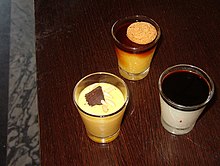
Vinegar is an aqueous solution of acetic acid and trace compounds that may include flavorings. Vinegar typically contains from 5% to 18% acetic acid by volume. Usually, the acetic acid is produced by a double fermentation, converting simple sugars to ethanol using yeast and ethanol to acetic acid using acetic acid bacteria. Many types of vinegar are made, depending on source materials. The product is now mainly used in the culinary arts as a flavorful, acidic cooking ingredient or in pickling. Various types are used as condiments or garnishes, including balsamic vinegar and malt vinegar.

Modena is a city and comune (municipality) on the south side of the Po Valley, in the Province of Modena, in the Emilia-Romagna region of northern Italy.
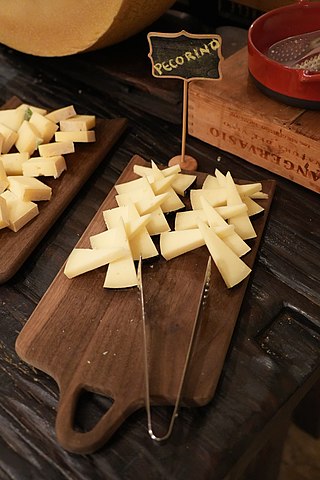
Pecorino is an Italian hard cheese produced from sheep's milk. The name pecorino derives from pecora, which means 'sheep' in Italian.

Parmesan is an Italian hard, granular cheese produced from cow's milk and aged at least 12 months or, outside the European Union, a locally produced imitation.

Three European Union schemes of geographical indications and traditional specialties, known as protected designation of origin (PDO), protected geographical indication (PGI), and traditional speciality guaranteed (TSG), promote and protect names of agricultural products and foodstuffs. Products registered under one of the three schemes may be marked with the logo for that scheme to help identify those products. The schemes are based on the legal framework provided by the EU Regulation No 1151/2012 of the European Parliament and of the Council of 21 November 2012 on quality schemes for agricultural products and foodstuffs. This regulation applies within the EU as well as in Northern Ireland. Protection of the registered products is gradually expanded internationally via bilateral agreements between the EU and non-EU countries. It ensures that only products genuinely originating in that region are allowed to be identified as such in commerce. The legislation first came into force in 1992. The purpose of the law is to protect the reputation of the regional foods, promote rural and agricultural activity, help producers obtain a premium price for their authentic products, and eliminate the unfair competition and misleading of consumers by non-genuine products, which may be of inferior quality or of different flavour. Critics argue that many of the names, sought for protection by the EU, have become commonplace in trade and should not be protected.

The following four classifications of wine constitute the Italian system of labelling and legally protecting Italian wine:
In Spain, the denominación de origen is part of a regulatory geographical indication system used primarily for foodstuffs such as cheeses, condiments, honey, and meats, among others. In wines, it parallels the hierarchical systems of France (1935) and Italy (1963), although Rioja (1925) and Jerez (1933) preceded the full system. In foods, it performs a similar role, regulation of quality and geographical origin of products from Spain. There are five other designated categories solely for wine and a further three specifically covering food and condiments, all recognised by the European Union (EU). In Catalonia, two further categories – labelled A and Q – cover traditional Catalan artisan food products, but were not recognised by the EU as of 2007. In recent decades, the concept of the denominación de origen has been adopted by other countries, primarily in Latin America. In 2016, the use of the Denominación de Origen (DO) for wines was registered as a European Union Protected Designations of Origin/Denominación de Origen Protegida (PDO/DOP), but the traditional Portuguese term of DO can still be used legally on labels.
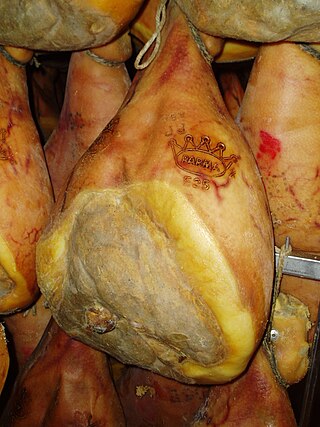
Prosciutto crudo, in English often shortened to prosciutto, is uncooked, unsmoked, and dry-cured ham. Prosciutto crudo is usually served thinly sliced.

Burrata is an Italian cow's milk cheese made from mozzarella and cream. The outer casing is solid cheese, while the inside contains stracciatella and clotted cream, giving it an unusual, soft texture. It is typical of Apulia.
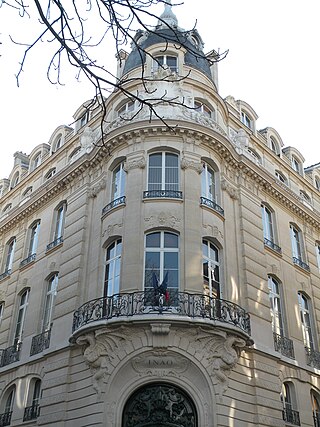
In France, the appellation d'origine contrôlée (AOC) is a label that identifies an agricultural product whose stages of production and processing are carried out in a defined geographical area – the terroir – and using recognized and traditional know-how. The specificity of an AOC product is determined by the combination of a physical and biological environment with established production techniques transmitted within a human community. Together, these give the product its distinctive qualities.
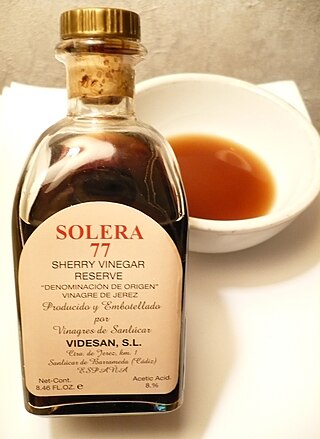
Sherry vinegar is a gourmet wine vinegar made from sherry. It is produced in the Spanish province of Cádiz and inside the triangular area between the city of Jerez de la Frontera and towns of Sanlúcar de Barrameda and El Puerto de Santa María, known as the "sherry triangle".

Vincotto is a dark, sweet, thick paste produced in rural areas of Italy. It is made by the slow cooking and reduction over many hours of non-fermented grape must until it has been reduced to about one-fifth of its original volume and the sugars present have caramelized. It can be made from a number of varieties of local red wine grapes, including Primitivo, Negroamaro and Malvasia Nera, and before the grapes are picked they are allowed to wither naturally on the vine for about thirty days. In Roman times it was known as sapa in Latin and epsima in Greek, the same names that are often used for it in Italy and Cyprus, respectively, today.

Traditional balsamic vinegar is a type of balsamic vinegar produced in Modena and the wider Emilia-Romagna region of Italy. Unlike inexpensive "Balsamic Vinegar of Modena" (BVM), Traditional Balsamic Vinegar (TBV) is produced from cooked grape must, aged at least 12 years, and protected under the European protected designation of origin (PDO) system, fetching higher prices. Although the names are similar, TBV and the inexpensive imitation BVM are very different.
Balsamic vinegar of Modena is a variety of balsamic vinegar and a protected geographic indication (PGI) condiment from Italy. It is produced according to various recipes. The PGI production regulations leave plenty of leeway, allowing the use of grape must in percentages between 20 and 90% and wine vinegar between 10 and 80%. The use of caramel is allowed, up to 2%. Reading the tag can provide useful information on the ingredients used and the processing methods. Withdrawal and refilling, as used in making Traditional Balsamic Vinegar, are not used; the ingredients, once mixed, must be kept in wood containers for a duration of at least 60 days. If the product is kept there for 3 years or more it is labeled "invecchiato" (aged). The Balsamic vinegar of Modena gained the PGI label on 3 July 2009. The requirements for the much more expensive PDO Traditional Balsamic Vinegar are different and more restrictive; it must contain only grape must and be aged for at least 12 years.

Uva di Puglia PGI is a variety of grape grown in the southern Italian region of Apulia (Puglia).

Torta Barozzi is a traditional Italian dessert.
Italian: (...Si presenta come una piccola zolla di terra e come una zolla si sbriciola... È un incantevole mistero fatto di mille aromi che confondono il palato in una sinfonia di dolcezza...)
(...It presents itself as a small clod of earth and like a clod it crumbles... It is an enchanting mystery made up of a thousand aromas that confuse the palate in a symphony of sweetness...)
Francesco Aggazzotti was an Italian lawyer, agronomist, oenologist, politician, and notary.







